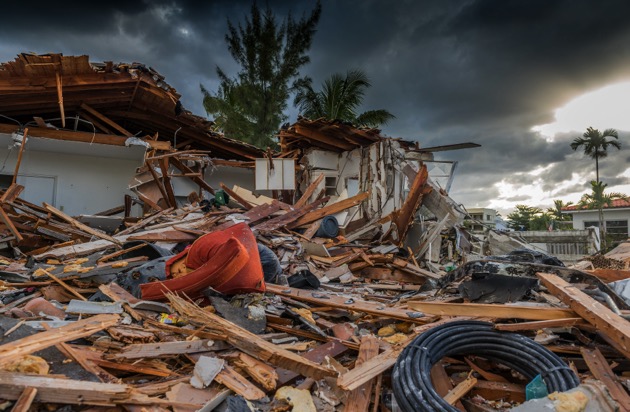
(NEW YORK) -- Weather globally and across the U.S. has grown increasingly violent, with Americans seeing a steady increase in tornado events since 1950. More than 900 tornadoes have been confirmed since Jan.1, according to the National Oceanic and Atmospheric Administration.
However, Tornadoes are not the only severe weather event leaving behind a trail of destruction. Tropical storms and hurricanes also have been wreaking havoc, amassing billions of dollars in damages. Since 1980, when NOAA began calculating overall damage costs, the U.S. has seen more than 300 extreme weather events rack up bills of over $1 billion each. Collectively, these events exceeded $ 2 trillion.
In 2020, there were 22 weather and climate disasters totaling $1 billion -- a new record. This also marked the 10th consecutive year the nation had at least eight disasters with billion-dollar tabs.
Hurricane Ida slammed Louisiana in August, becoming just the third hurricane in history to make landfall in the state with winds of at least 150mph. Hurricane Laura in 2020, and the “Last Island” hurricane from 1856 are the other two. Costs from Ida are expected to surpass $64 billion, making it the second-most damaging hurricane in Louisiana, behind Hurricane Katrina.
According to Louisiana Gov. John Bel Edwards the most recent disasters could have been worse as a system of flood gates, pumps and levees costing more than $14 billion were put to the test, avoiding disastrous flooding similar to those caused by Katrina.
“Our levees really did perform extremely well,” he said, adding, “There were a few smaller levees that were overtopped… but they did not fail.”
Still, more than a million people in Louisiana were left without power, over 90 people killed across eight states, and the remnants of Ida crippled parts of the Northeast. New York City issued a flash food emergency for the first time in history, and Central Park saw a record 3.15 inches of rainfall in a single hour, according to the National Weather Service.
“You have to meet a $30 million threshold in order to qualify for the additional FEMA assistance. We shattered that number. We’re at least $50 million in damages,” New York Gov. Kathy Hochul said. “Because of climate change, unfortunately, this is something we’re going to have to deal with with great regularity.”
Texas was sent into a deep freeze in February after historically low temperatures and multiple severe winter storms swept through northwest, central, and eastern states, leading to a catastrophic power outage. Millions suffered with no heat or drinking water, and over 125 people were killed in Texas alone. NOAA reports this as the most costly U.S winter storm on record at more than $20 billion, eclipsing the “Storm of the Century” in 1993.
Memories of being left cold and in the dark are still fresh for those like Houston resident Michael Ashby, telling ABC News, “Our temperature in the house went from 80 degrees, all the way down to 45. So, we were just snuggled together, bundled up.”
The tornadoes, hurricanes and even Texas’ deep freeze share a common source according to Stanford University climate specialist Noah Diffenbaugh.
“The heat in the upper layers of the ocean is increasing. That’s providing more energy for storms. We are seeing not just stronger storms, but also this rapid intensification of storms," Diffenbaugh said.
More than 530 people have died this year due to severe-weather events with a price tag of about $350 billion, according to government meteorologists.
Copyright © 2021, ABC Audio. All rights reserved.

